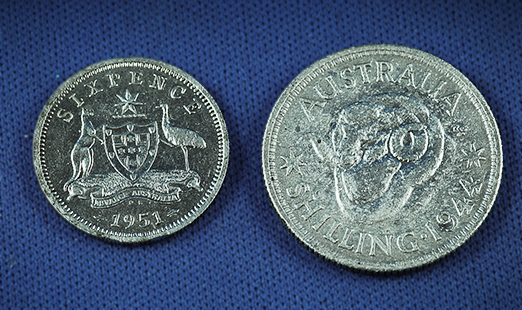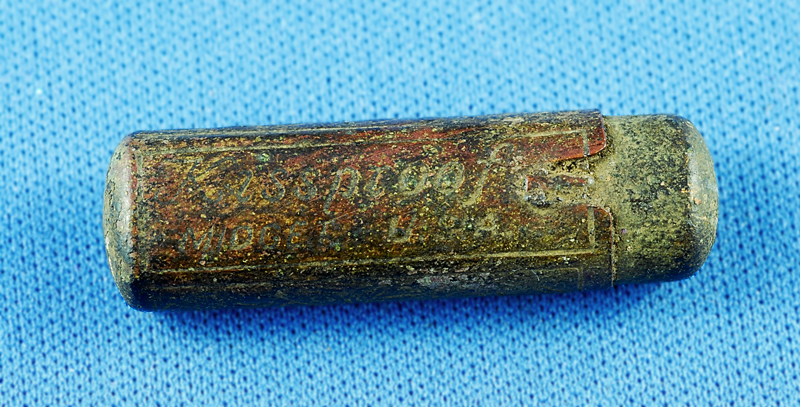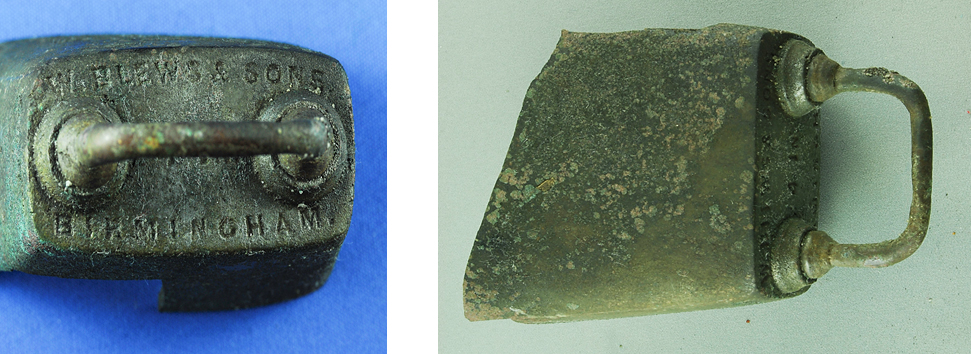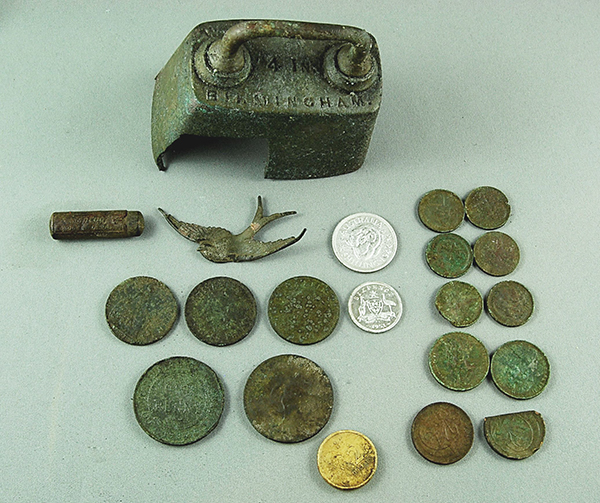One of the things I love most about the hobby of metal detecting is the anticipation of what you will find on any given trip. Last week was no exception as I headed out early to one of my favorite parks that has been producing a steady stream of finds for the last four years.
Armed with my CTX 3030, I like to use the following settings when in parks:
- Mode – Coins, with tones set to 50 conductive tones;
- Response – Smooth;
- Target Separation – High Trash;
- Recovery – Deep;
- Pinpoint – Normal.
Once I was detecting I had only been going a few minutes when I had my first target under the coil, a two cent coin. This was followed by a couple more one and two cent coins and a few old screw caps, when I had a nice high tone reading Fe 12 Co 46 that sounded like silver. Pinpointing the target and carefully digging out a plug, I probed around in the hole with my PRO-FIND 25 and quickly located the target in the bottom of the hole. I could see it was a shilling! But without my glasses on I would have to wait until I got home to get a date off it (see picture, below right – 1944). Not far away, and I had another nice signal, slightly lower in tone with a reading of Fe 12 Co 35. After a quick pinpoint and recovery, I had a 50% silver sixpence in hand (see picture, below left – 1951).

After a bit of a quiet spell I had another good signal but with a lower tone. Checking the screen of my CTX 3030 it was showing a steady Fe 12 Co 27, being a higher reading than a ring pull or pull tab, I decided to recover this target, which turned out to be a small copper tube of some kind, but a proper ID would have to wait until I got home (see picture below).

With a few more one and two cent coins and some crusty pennies and a half penny in my pouch I decided to call it a day in the park.
I then headed to a site on the way home that used to be an old farmhouse. All that is at this site now is a large Morton Bay fig tree. Beyond its canopy is fenced off and private property, so the area is quite small. I know other detectorists have been over this site, but I have confidence in my equipment and searching technique so settled into working transects under the tree.
There was no shortage of bottle caps, something I had been told by other hunters, but with perseverance I was sure I would find what others had missed. After about a quarter of an hour and a handful of bottle caps, I had my first coin, a Queen Elizabeth halfpenny. More rubbish, then down beside one of the old trees huge roots another halfpenny came to light.
Halfway along a transect I had a good solid signal coming in at a steady Fe 12 Co 42, well worth a dig I thought. I quickly had it pinpointed and started digging. After a couple of inches I checked with the PRO-FIND 25, but no response, so more digging. At about eight inches another check and a response but faint, so more digging, by this stage I was nearly up to my elbow and was starting to think I had an old pot. Another check with the PRO-FIND 25 and I was close and I could tell it was a big target, maybe an old belt buckle I was thinking? A couple more handfuls of dirt and I had my target in hand at last! Unfortunately broken, but I was holding a 4 inch cow bell!

I was pretty excited as the farm dated back to the late 1800’s. Once home, it was time to gently clean and inspect my finds. From the park came the nice 1944 shilling and the 1951 sixpence. The tube turned out to be “kissproof midget” lipstick from the U.S.A, and dates from around the 1930’s, and a small metal swallow, which I’m not sure of its origin.

From the farmhouse site, I recovered two halfpennies and my cow bell. With the makers name “W. Blews & Sons, Birmingham” stamped on top of the bell I was able to do some research and found that the Blews family had been making bells from the mid 1700’s and ceased to operate by around 1890. So my bell is at the very least 125 years old! Even broken I think it’s a pretty cool find. This is what I love about detecting. So keep searching and enjoy the history!
You can see more about my detecting adventures on my YouTube channel “Westcoast Mark”http://www.youtube.com/user/Thedeepbluediver and my own bloghttp://westcoastmark.wordpress.com/




















Comments
To make comments you must be logged in, please note comments will not display immediately due to moderation